Archive for the ‘Art’ Category
Creating Art Space For Children
Author: utbt15 Aug 2011
Part 7 of many.
Tharini, this is for you. What now seems like ages ago, I promised you that I will do a post on setting up an art space for children. Months passed and you have already created an art space for the boys….Better late than never and never to break promises….so here it goes.
Let us begin with the basic premises:
– It is the process, not the product.
– You are aware of your child’s age, capabilities and interests.
Age: Which means that your very young child will not have a sense of boundary. Provide her with a big canvas. Do not give her a 8 X 11 and expect her to create within it.
Interest: Some children do not like wet paint. It does not make them any less of an artist.
In my opinion for children age 2yrs – 6yrs, the popular art activities are play dough, cutting, pasting, crayons, wet paint, shaving cream, stamping. I have two or three variations of these in my art shelf and keep rotating them. A simple change paves way for new creative energy. Some typical things I rotate are
Playdough
Week1 – Play dough + roller and cookie cutter
Week2 – Play dough + moulds
Week3 – Playdough + extruder
Wet paint variations
Week1 – finger painting
Week2 – brushes
Week3 – spin art
Week4 – liquid water color
Regarding colors, there are philosophies about what we must give children. Montessori believes in starting with one color at a time, because the children must enjoy the process – fluidity of paint, hand eye coordination, brush control and learn their boundaries. Giving them too many colors distracts them from the process. The second step would be to give them the primary colors ONLY and let them create the secondary colors. Waldorf believes in chunky crayons in all colors and emphasizes pastels in their environment. So pick something practical that would work for you.
I knocked off the doors of a dining nook, which gave me two decent sized shelves. To organize, I picked up four file trays from IKEA. Right next to the shelves I placed our IKEA easel. Voila, our art space. Now some pictures for you.
One side printed paper, some collage material I find interesting, paper grocer bags cut and flattened, construction paper are the other supplies I have in the trays.
Good luck with your art space peeps!
Gandhiji’s Birthday
Author: utbt5 Oct 2010
Gandhiji’s birthday is a big deal in our school. We start with International Peace Day on Sept 21, then we do Pennies For Peace, then we talk about Gandhiji – the peaceful warrior and end the peace/non-violence theme by celebrating United Nations Day. Our school is closed for Gandhiji’s birthday every year.
This has been our routine for the three years we have been with this school. But the girls are growing and this Oct 1st and Oct 2nd we had a lot of talk about Gandhiji at home.
Mieja’s questions:
Did a english man shooted Gandhiji?
An Indian man did? But, why Amma? Gandhiji is the father of India. Why would the ‘goat person’ kill his own dad?
Did Gandhiji die in the darkness or something? What time of the day was it?
When he was shooted, how did he fall?
Why is he dressed like that? He has no shirts? Was Gandhi poor? He had no money to buy shirts? Is that why he is naked?
Chula’s questions:
Why do you say Gandhi Jayanthi Amma?
Is it like Krishna Jayanthi? Does Jayanthi mean birthday? Chadurthi is Ganesha’s birthday too. So why are we not saying Gandhi Chadurthi?
Chula had her shower almost by herself and dressed up in a pattu pavadai. Then she came running to me and said that she was ready. When I asked her ready for what, she replied that she is ready to celebrate the jayanthi or chadurthi or whatever it is, demanded why I haven’t set up Gandhiji’s picture, decked it with flowers and wanted to know what special Gandhi food I had cooked.
I promised her we will do something special in an hour and quickly planned some art work, books, songs and special food.
The food part was the easiest – peanut sundal and milk. One more thing to love about Gandhi, it is so easy-peasy to prepare his favorite food. Chula wanted to sing Ragupathi Raghava, so we did that. We read Marching To Freedom By Pratham, (special thanks to Chox aunty for sending special books to the girls) and Dandi March is making quite an effect in Mieja’s mind. I can sense questions brewing. We also have Picture Gandhi by Tulika, The Story Of Dandi March by Tulika and Gandhi: His Life In Pictures. We thumbed through all the books.
I have to admit that I was a little lost for the art part. Then I decided to talk about how simple lines can form a drawing, profile vs front view. I showed then the famous question mark profile drawing of Gandhi, how such simple lines can be representative of Gandhi. Mieja wanted to draw and Chula wanted to write an essay. So this is what we ended up doing.
I had been wanting to introduce the liquid water colors that I had purchased a few weeks back. So I did white on white crayon resist and told them that if they paint the canvas they will discover a surprise. They were kicked when they saw Gandhi on their canvas.
They wanted to experiment on crayon resist and this is what they came up with. They can draw themselves with long hair and long curly eye lashes even when they cannot see what they were drawing. LOL!
I Know What We Did This Summer – 1
Author: utbt11 Aug 2010
More summer fun 2010 posts.
Do you want to know?
Okay, I will give you a picture, can any one guess how we did this?
Thanks for your comments. It is spin art. I also showed them how to splash paint to add colors to the finished spin art. Kids were super excited and Chula kept saying, “Amma you are doing just like Jackson Pollack”. I have a feeling that this splashing will come back to bite me.
What is the deal with Google? They acquired Slide? Now I have this ugly super poke pets ad in the slide show. Click on the X to close the ad. Move mouse over the pictures for captions.
Art Games
Author: utbt9 Aug 2010
More summer fun 2010 posts.
So what does one do with two little girls for 10 weeks?
That is 70 days. Time up and awake comes to 840 hours.
TV/PBS kids games/Wii, not that big at home. It is mainly to give myself a break. We have only one reader and one that pretends to be a reader 🙂
We did the usual playdates, block building, drawing, coloring, free play, gardening, bubble blowing, side walk chalk, easel painting, rangoli, trampoline, bubble bath, wading pool, parks, hikes, bicycle ride around the neighborhood, libraries, museums, exploratarium, cross words, puzzles, I spy, planetarium, doctor office trips(Yep, double bronchitis for the whole family including the adults in the middle of summer! Who would’ve thunked?!) botanical garden, camping trips. Still did not add up to 840 hours! No siree Bob, it did not.
And that is when I read about the ‘Simon Says’ game and thought that it would be interesting to do at home. I wanted to do shapes – one shape a day. My main goal is to talk to the girls about the different shapes and for them to look around them and see what shapes they can identify in our environment.
The first day we did circles. Red circle, blue circle, multicolored circle, red circle inside a blue circle, how many circles can you fit inside the biggest circle, draw three circles all three touching, color the smallest blue circle, color outside the green circle….the girls just went with the flow and had a ball.
The next day we did hearts. The girls quickly took over. Heart = love. I love my family. ‘Mieja look I drew you in my heart, that means I love you’, ‘I am making a flower for you’, ‘I am drawing a family in love’….. I stepped back, picked up a book and answered only when I was specifically called for.
What did we do on the third day? Duh! Triangles, of course. Mieja had difficulty making the third line straight so that it intersected the first two, while Chula was already doing the triangle things she knows – pizza, triangle maze, ice cream cone, ice cream sundae, flower with triangle petals (okay that was a far one, but whatever) etc. So I had to branch off, giving different instructions for them. Chula wanted to warli. She did one warli image, then our family in warli holding hands and dancing. When she said that she wanted to do spiral warli, I made o-o-o-o-o-o- in a spiral and she figured out how to do the triangles and how to make them hold hands. She walked around the paper, rolled around the paper, looked at angles that would put a cinematographer to shame, but she did it. Mieja wanted to do warli family and was getting upset that she couldn’t do it like her sister. After much talking that it has to be ‘her’ work and must be something ‘she’ enjoys doing, she did do a family with square and rectangle bodies. But she was happy that she made her own family.
Fourth day we must have done squares. But we took a break 🙂
Beasts Of India
Author: utbt17 Feb 2010
Edited to add: Submitted post for Shruti’s Artsy-Craftsy June 2001 Folk art challenge.
To play Feb’s “Guess the book” see the side bar.
FOLK ART.
The very first time I heard this term was in 2003. I was experimenting with various mediums. I took my Tanjore painting of Krishna and Balram to my oil painting class, people were impressed by the richness and details. That’s when some one popped the question, “Is this folk art? Some thing typical of India?”. Though I had no clue about the exact definition of folk art, some thing prevented me from saying yes. I thought hard and answered, “Well, it is more like traditional art, practiced in the southern part India.” Though I had answered the question, I had no idea about the difference between folk art and traditional art and why I chose the later term to describe my painting. But something was planted in my mind regarding the different art forms of Indian art. Ever since, people who have know me would have heard me say, “I am looking for books on Indian art that are intrinsically India.”
For the past couple of months I have been looking at Tara’s website, which by the way is my new pass time, and I must say that I am mesmerized. All their books have a unique theme and the vibrant book covers tempted me to hit the ‘Add To Cart’ button. It was at this point I happened to clean one of book storage bins and I almost squealed in delight. There, it was lying at the bottom of the bin was Tara’s BEASTS OF INDIA! I must have bought it in my recent India trip and must have completely forgotten about it or the book fairy must have paid me a visit. (In case if it is the book fairy, I don’t mean to sound ungrateful, thanks for this book and all that, but you really must look at the complete list. I so want to own DO! Also by Tara.)
The book has been reviewed for Saffron Tree. Find the review here.
How can we let this inspiration pass. So we combined it with the festive atmosphere of the Lunar New Year and Satish’s review of Everyone Knows What A Dragon Looks Like and we made our own paper dragons.
First what we talked about how every one imagined their dragons. Prominent features like big eyes, horns, bushy eye brows, sharp teeth, fire were thrown out. We all unanimously agreed that the dragon is scary and the color red must feature in the dragon.
We picked one style that inspired us to create our dragon. Chula wanted to combine Patachitra and Gond. The little one started with Madhubani and soon changed her mind. I was deeply attracted to Gond the minute I set my eyes on one. So I stayed with Gond till the end.
The hand with its fingers spread out can be a starter for many art forms. For the most part it eliminates the, “I can’t do it like you amma, can you do it for me?”. We traced our hands, leaving out the the thumb. We converted the index finger and the pinkie in to ears. The other two fingers became the horns.
It took me a good two hours to finish my dragon and I must say that it was deeply therapeutic. The little ones lost interest after the first fifteen minutes and they moved away. But they saw how much I was enjoying myself and came back to ‘help’. For the last 45 minutes they sat next to me, one holding the pens and one making sure that I did not miss the pattern. The critique from the little ones, “Well, he kind of looks friendly amma. Not scary at all. May be he is a she.” I did start out with the mental picture of the Yali, but the end result was very different.
I know that the books touched the girls because when I stepped out I saw that they had created out of side walk chalk a Warli inspired cow 🙂
With that I leave you with some pictures.
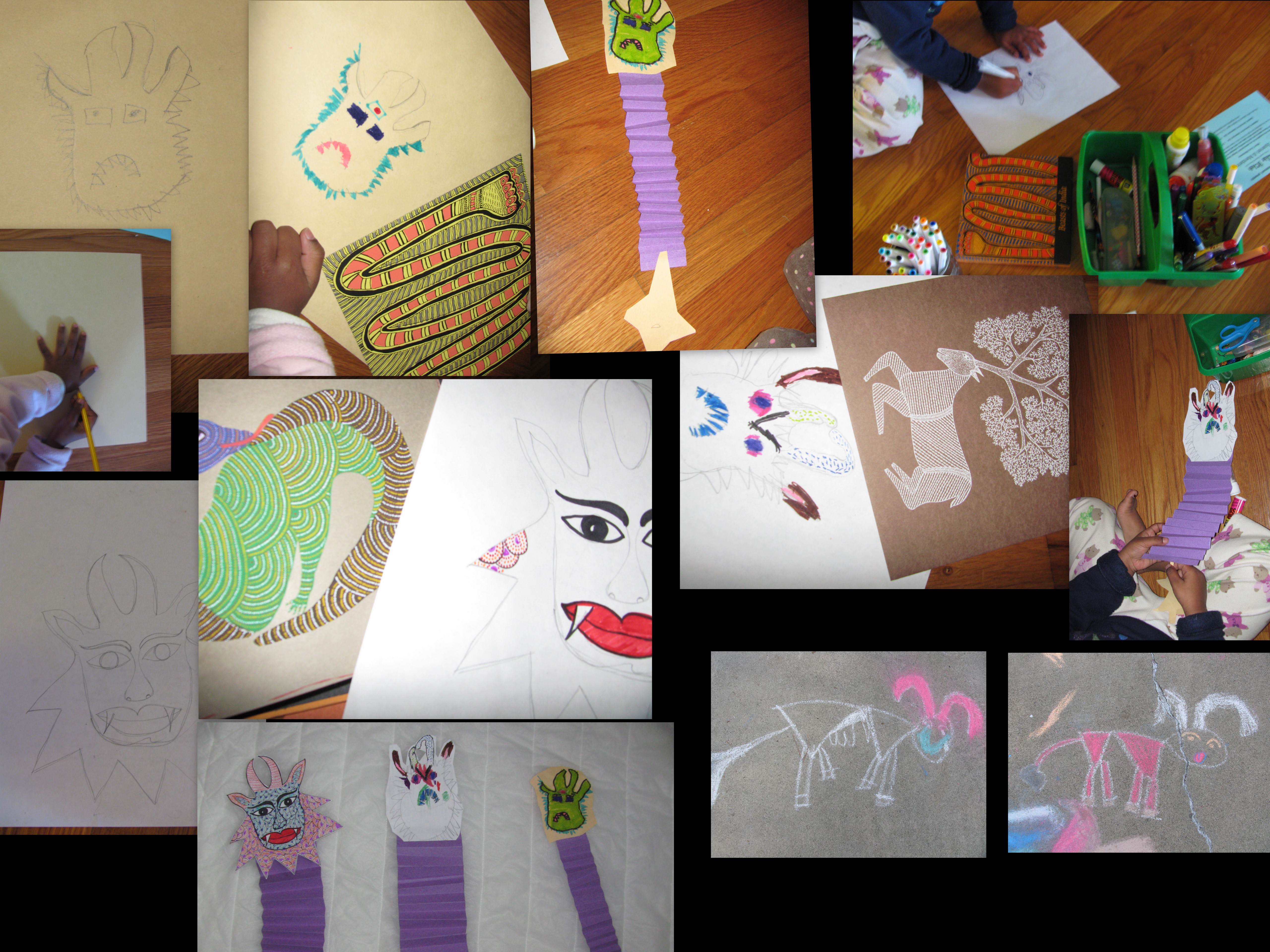
Dragon inspired by Beasts of India
Resources
Author: utbt23 Jan 2010
Part 6 of many.
Books like Pranav’s Picture, Harold And The Purple Crayon, Dot and Ish are very helpful for the parents to understand the creative process. I have reviewed these books for Saffron Tree. I reviewed, also for Saffron Tree, a few books that have open ended art exploration ideas.
You can find some awesome projects in Sheela’s blog. Some how god gave her 44 hours in a day and an extra truckload of patience. I especially loved this and this. Imagine the fun you and your child will have doing this.
If you are planning on introducing art history or working with your child to recognize elements of a painting books, don’t fear. There is a cartload of books available. My personal favorite is Lucy Micklethwait and Usborne’s The Children’s Book Of Art.
Books like Can You Find It, When Pigasso Met Mootisse, Oooh! Picasso and Look!Look!Look! are very effective when you can follow it up with a trip to a museum.
One thing I am constantly struggling to achieve is a definitive art space for the kids at home. Also what are the basic supplies one needs? If you have the same questions, don’t fear the Camp Creek Blog is here. Check out the right hand side links for ART LESSONS and also posts under CARD CATALOG ->in the studio. That was the basic I started off with.
That pretty much summarizes all that is in my mind. Now I am throwing the subject of art appreciation open to you all.
On the subject of appreciating your child’s art, what do you do when you child shows you her art? Do you say good job? Do you define what she has created? Do you say, “Oh is that a butterfly?” In that case are you prepared to meet an answer like, “No it is you amma. I drew you.” Do you ask her to define her own work and in the process tell her that what she creates must be something that fits in to definition? What do you all do as parents?
Another thing I am trying to get a grasp of is how to store all the art they churn out. On an average day there are atleast 5 papers per child. On top of this there is their usual academic work from school. What do you all do?
So long folks. Have a great day.
How To Teach Art To A Young Child?
Author: utbt18 Jan 2010
Part 5 of many.
Okay the survey results are as follows:
92% played with Fevicol and loved it.
44% loved coloring and erasing with markers, 20% yes on only coloring, 20% yes only on erasing.
92% loved pencils and sharpeners.
Candle wax seems to be the biggest hit with 96% love.
57% did not like ripping newspaper. What a bummer?! I strongly recommend you guys try it. It is such a cathartic release.
50% love swirling paint, 28% like it, 14% are okay with it.
72% make rainbows in the shower and I am happy to announce that we all believe in showers and soap.
57% rolled chapathi dough and then ate it. 38% played and discarded the dough.
62% did not scribble in the house, no experimentation and wondered about my mother’s reaction.
My grand conclusion based on the poll results…….
As children, most of us just played for the sake of playing, without bothering about what we produced at the end of it. These are the found memories that we carry with us. These are the memories that we might have forgotten, but when kindled, put a smile on our face. This is process orientation. This is what your young child is doing. Just doing something and taking pleasure at that moment without a bother about the past, future, accolades, recognition, praise and the mess. Soon they are going to grow up and slowly get in to the product oriented mode. For now, just let them be.
This, my dear peeps, is the ulterior motive behind the survey.
Give them the art materials. Give them the space. Give them the freedom. Stand back. Let go. Let them play. Let them discover, understand and love their material. If you feel like they have to create something meaningful to an adult, get in touch with your Fevicol days. Set limits. Like for example, paint only on designated area. Because, not many of us have studio work space. So, parents need to set limits to protect the walls, furniture and carpet. If it is their first time with paint or messy material sit with them to make sure that they understand their limits. Children and mess, many a times it is not intentional, they just cannot help themselves. Even better, sit with them and participate without taking over or interfering. It provides the children with a good model and you get to realize how much fun the whole process is.
The first six years of their life, children learn their world and express their thoughts through art. So it is essential that parents understand that the process is ‘learning about the world and communicating through art’ which later, around age 7+, becomes ‘art through learning and communication’. You cannot ‘formally teach’ a three-year-old-child to make art, but you can show them the different ways to explore.
When it comes to tips, techniques and pointers, there are overwhelmingly large number of resources. But when I look for open ended art exploration for the preschool age, I carefully avoid projects that have a finished product to show for. But, hey, it is just me. Given my personality, I have to consciously stop myself from controlling what the children do. In my opinion, when we follow some one else’s instruction and strive towards a finished product, it is craft. Not that craft is any lesser, but it is some one else’s baby, not mine.
Coming up next: List of resources for open ended art and books on art appreciation.
A Trip Down Memory Lane
Author: utbt15 Jan 2010
Part 4 of many.
We all would have colored, painted, made some kind of art as a kid. Many of us do it even now. So dip in to your memory bank or your current experiences and answer some questions.
There are just 10 questions. and you can choose to be anon. So don’t be intimidated. 9 questions are about you and the last question is for me. Indulge me please. Pretty please with a cherry on top ???
You will see only one question at a time. I have provided some answers. For folks who want to tell more there is a text area. After you answer click on next. Please make sure you answer all 10 questions.
Survey will be open till Jan 18, 4.00PM PST.
Get…Set…Go 🙂
**********************************
Is Art Nature Or Nurture?
Author: utbt13 Jan 2010
Part 3 of many.
A child comes in to this world all geared up for survival. Think about it. Who taught this itty-bitty thing to latch on, to suck from the breast, to root, to paddle while in water, and imitate walking? All this within minutes after birth? The only explanation is new born brain is wired to handle certain reflexes. Few other things the newborn brain is designed to do is to communicate, to absorb language and to bond. These are the essential tools for survival.
If one looks at language development, music development and art development in children, it follows the same pattern. Language for example, children start with receiving language before they start talking. Talking comes in a certain order. They start with cooing, progress to babbling, figure out everything has a name and hence understand symbolism, start to say single words, move on to telegraphic speech and then comes the talking.
Children view art as a form of communication, especially in the first three years. They understand the concept of communication – thinking up something and expressing it to other people. Then they understand that communication can be using words or physical body movements like pointing gesturing etc or using paper and pencil/crayon. (The beauty about art as a tool for communication is that children use it to communicate to themselves at times. They think of a visual idea and many a times putting that visual on paper clears a lot of things for them) By this time they are masters in cause and effect, otherwise they wouldn’t know that pencil causes an impression on paper. They are developing hand-eye co-ordination and fine motor skills, otherwise they cannot manipulate the pencil to make marks on paper. We are talking about a 12month – 18month old child now.
Just like talking there are stages in drawing. Once there was a nice lady called Rhoda Kellogg. For 18 years she collected one million drawing sample of children in a certain age group. She researched the scribbles and concluded that
- Children first explore the art material, euphemism for your child eating crayon or grinding pencil. Or like in our house, a person who shall not be named painting their younger sister’s freshly tonsure head with red paint. And another person who shall not be named allowing their older sister to paint her head but insisted and rolled on the floor crying that her face needs to be painted too.
- Then they scribble. Children have 20 basic scribbles. Not all children use all the 20 scribbles, but they favor certain scribbles based on their intelligence style.
- They extend their scribbles, like making X and something resembling shapes. Invariably all children draw the circle as their first enclosed space. Happy face and sun figure in most of the children’s drawings. Then they combine shapes and such. This is when they draw ‘the house’ with one triangle for roof and a rectangle/square for the bottom. Even though they live in apartments with flat roof, they draw A-line roofs in their drawings!!
- Then they repeat and repeat and repeat, till they refine their style, placement, materials and they evolve their own individual style. By this time your child is six years give or take.
Are you blown away? Did your jaws will drop? Mine did when I first read about it 🙂
If one were to debate if art is nature or nurture, I would say both. When it comes to art, there are two things there is appreciation and there is creation. An artist is a person who has the ability to appreciate what she sees, figure out what makes the maximum impact on her, break it down in her brain in to simple elements and create it using a medium. The first part, appreciating what they see and capturing the main elements of the images that make the maximum impact on them comes naturally to young children (6 and under). Plus they are process oriented. Hence my belief that children are born artists (NATURE). As they grow up, they either grow in to people who create or grow out of art. This solely depends on their experiences with and exposure to art in the first six years (NURTURE).
So, should I run and sign up my two-year-old for art classes? What is art exposure? What do parents do to encourage and inspire their children? Will keep y’all posted. Before that indulge me in this survey pliss.
Technorati Tags: is art nature or nurture, Rhoda Kellog, patterns in children’s drawings, children use art to communicate
What Is Art For A Child?
Author: utbt11 Jan 2010
Part 2 of many
Art is open-ended. What is beautiful or meaningful to one person makes no sense to another. Personally, I love Raja Ravi Verma. My next best would be the impressionists. I love them all, I love the concept, I love the play of colors, I love the way the artist looks at light and dark. Recently I have been introduced to pointillism and all I can say is WOW, what a vision. This is in the late 1880?! I consider this some kind of rudimentary vision which later got extrapolated to the pixel concept now used in TV monitors.
Modern/abstract art, I simply don’t understand. I have always thought, a child could make it, what is the big deal. But one of my classmates, with a masters degree in art, explained to me that it is the process, not the product. During break time, we were discussing Jackson Pollack’s abstract expressions in particular and I said, “Jack the dripper??? Come on, my three year old can do it. I can do it. Drip, spit and roll in paint. Hah!” and my classmate said, “But did you do it? Did you have the guts to exhibit your three year old’s painting? A painting is an expression of a thought or the artist’s perception/reaction to a mental image. Pollack captured it in a way that no one had done before. He deserves credit because he was the first to think about that particular expression and had the guts to back it up.” Post that conversation my attitude to modernism and abstract expression has changed from condescension to respectfully saying, ‘two thumbs up, but not my style’. Jeez, I don’t want the enormous responsibility of looking in to some one’s mind. I am not quite ready.
But modern art does have its merits, purely from my POV. I have found from experience that children are likely to be less intimidated by modern art. They find some sort of kinship with the artist. May be it gives them the same, ‘hey, I can do this’ confidence?! May be because before six years of age children are still pure and process oriented?! I was blown away once when Chula (she was 4-ish I think) drew the drawing below and explained to me, ‘This is you amma and this is you dancing. The dancing you is moving, just like the picture lines in my class room is moving.’ The picture in her classroom she was referring to is a Kandinsky.
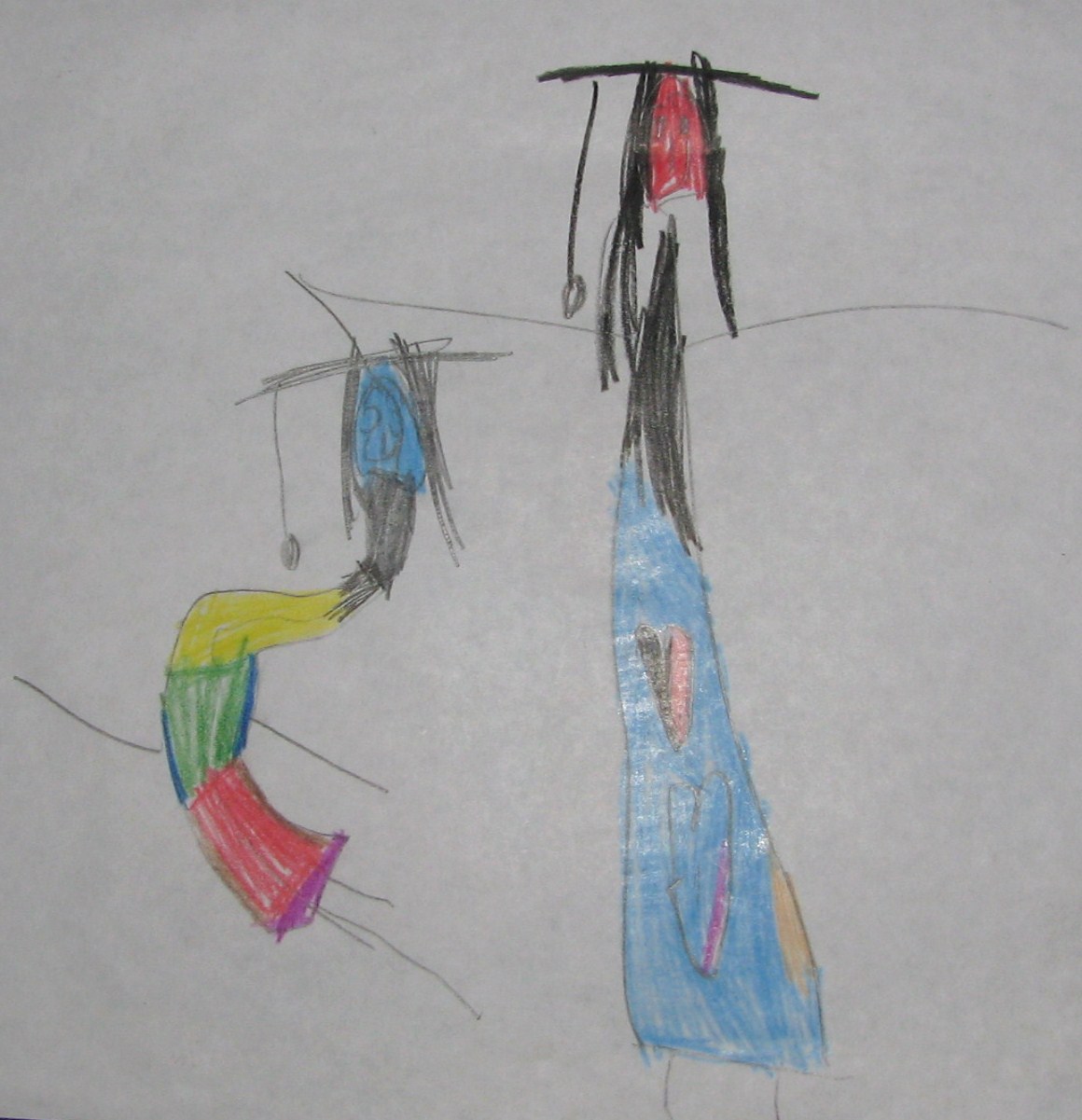 |
 |
So what is art for a young child? It is nature, it is communication. It is a basic instinct.
Part 3, if art is nature, then why aren’t we all artists? Click here.
Technorati Tags: what is my art, preschooler art, child art, art product vs art process, is art nature or nurture, raja ravi verma, pontillism, impressionism, kandinsky, pollack, abstract expressions, what is modern art, do young children prefer modern art
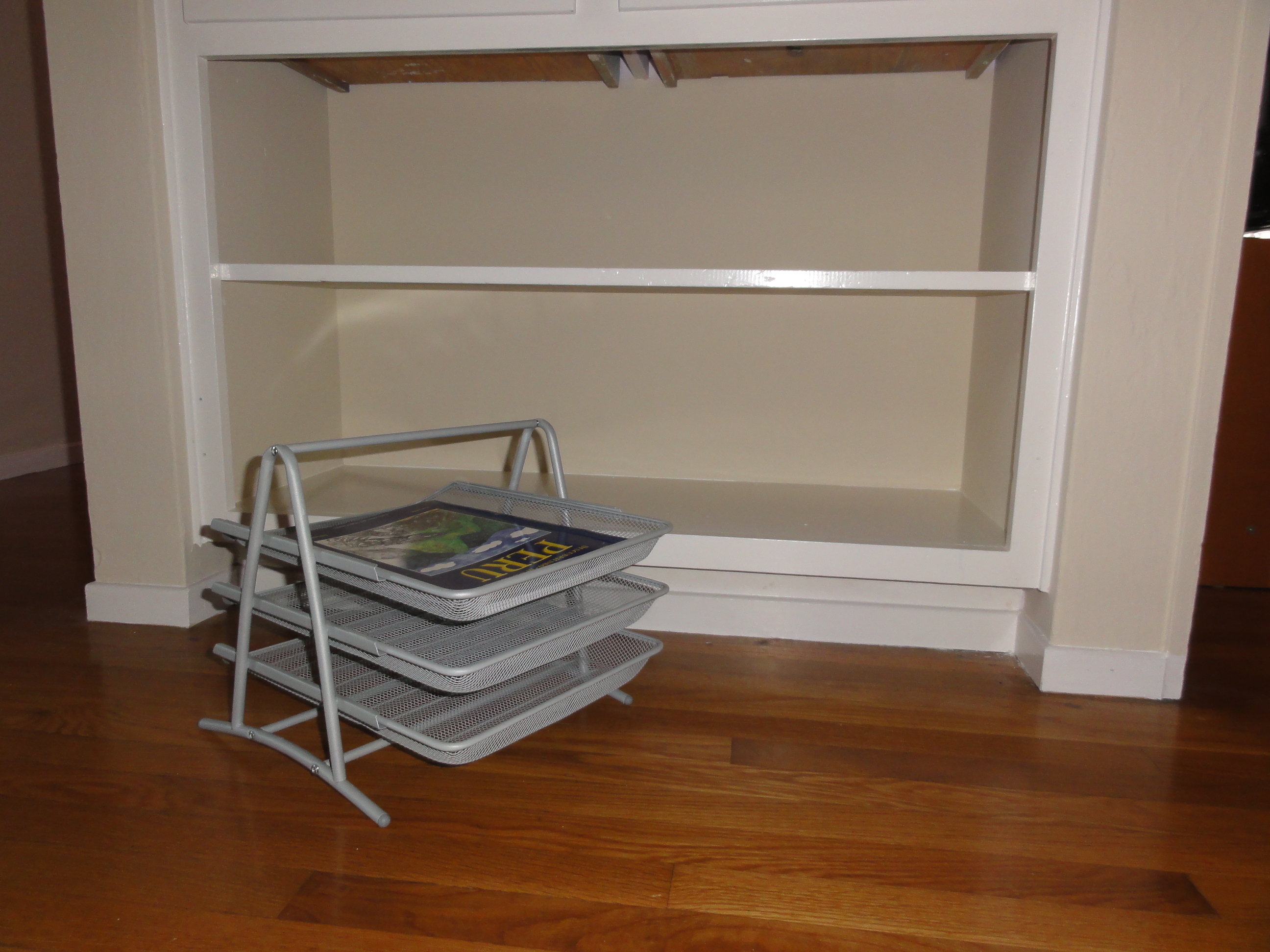
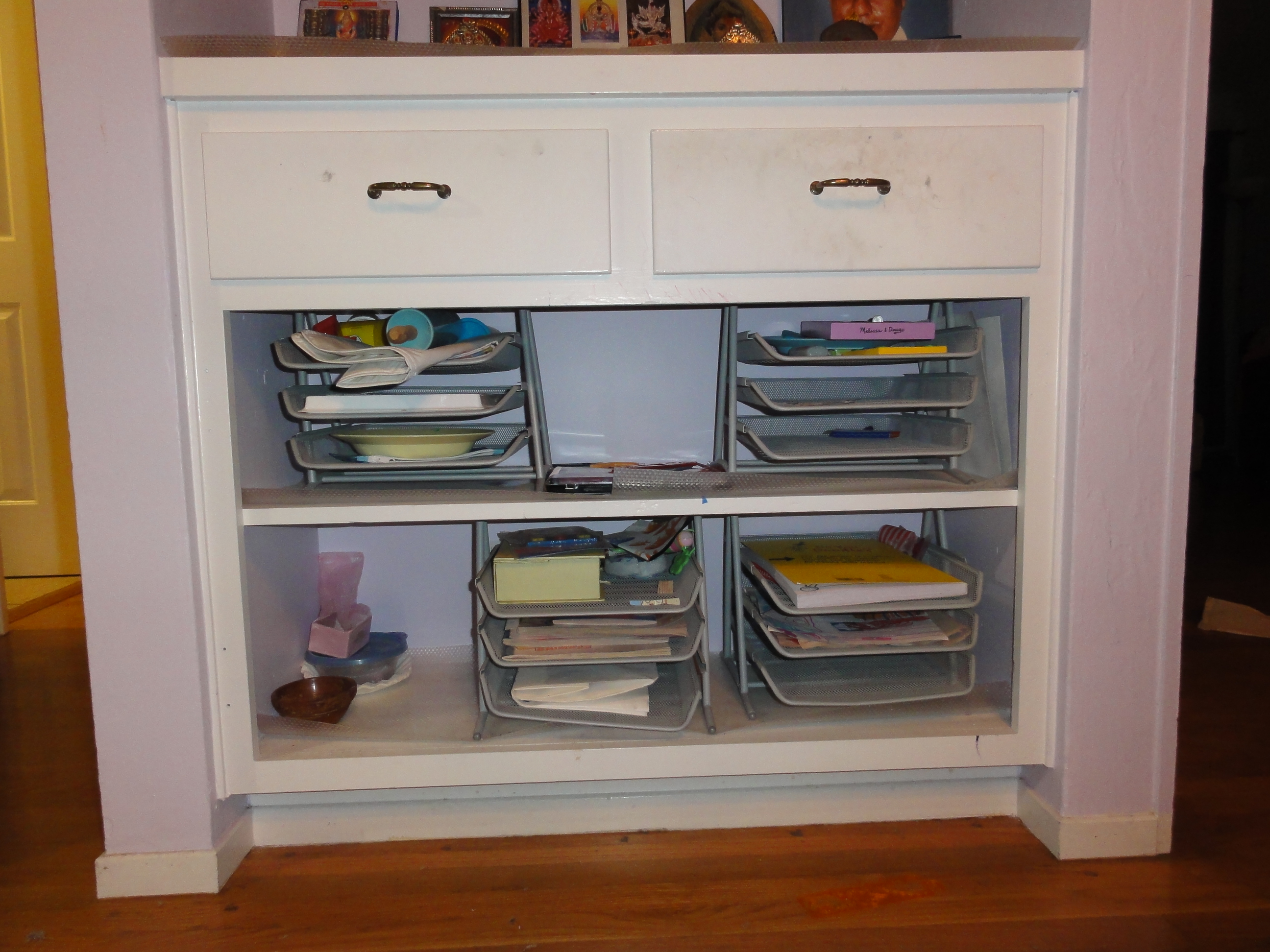
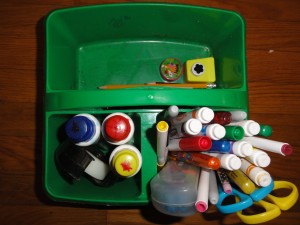
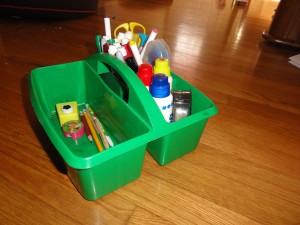
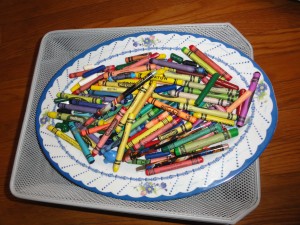
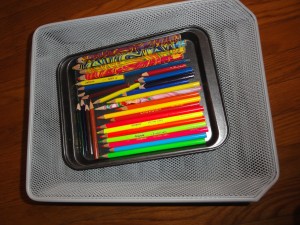
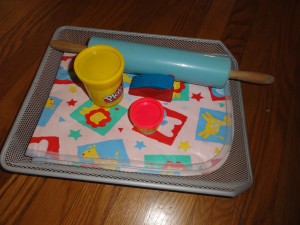
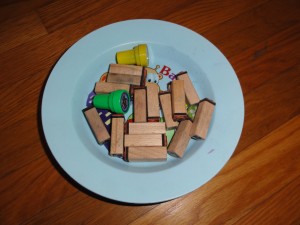

 (No Ratings Yet)
(No Ratings Yet)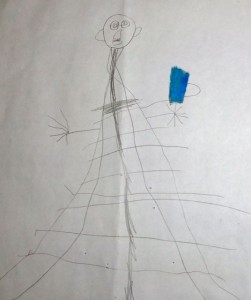
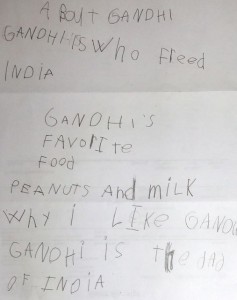
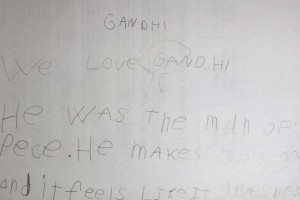

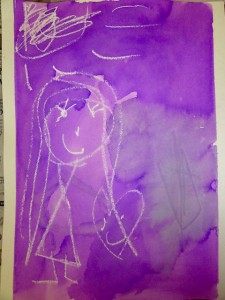
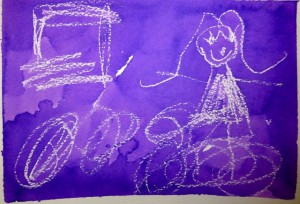











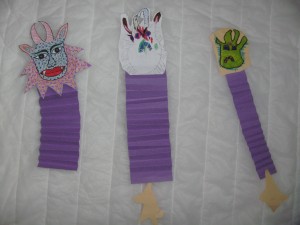
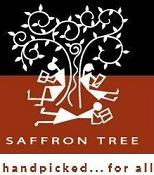
Recent Comments